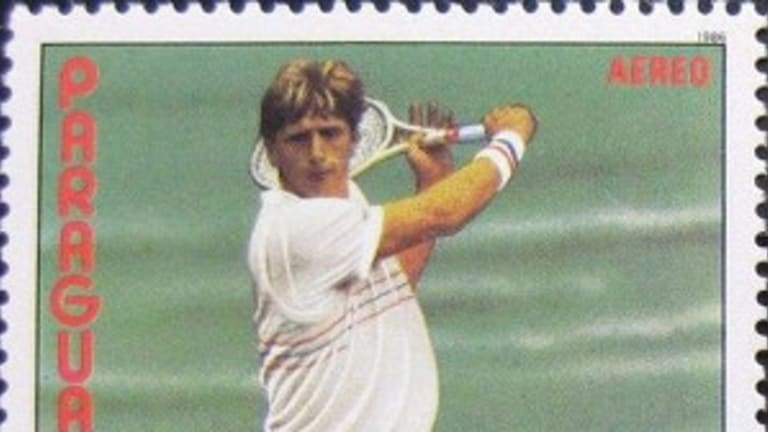This year marks the 50th anniversary of TENNIS Magazine's founding in 1965. To commemorate the occasion, we'll look back each Thursday at one of the 50 moments that have defined the last half-century in our sport.
Boris Becker was never crazy about the nickname “Boom Boom,” but it’s hard to think of a better description of what the German brought to the sport when he belted, shimmied, and dove his way to his first Wimbledon title in 1985. He may have hurled himself around like a puppy, but there was nothing innocent or cuddly about the way the 6’3”, 17-year-old became the youngest and so far only unseeded player to win Wimbledon. He did it with raw power. After Boom Boom went ka-boom, the finesse that John McEnroe had used to win three of the previous four Wimbledons suddenly looked like it had come from another century. The power game was here, and it’s still with us today.
Becker has called July 7, 1985 his “second birthday,” and he told TheNew York Times that after winning Wimbledon before he was even eligible to drive in Germany, “people looked at me like I was from Planet Mars. They said I couldn’t have been human to do that.”
While the world at large may have been stunned by his performance, those in the know had heard Becker’s noisy footsteps coming for some time. The previous year, at 16, he had reached the third round at Wimbledon; there he tore ligaments in his ankle, hopped to the net to shake hands with his opponent, Bill Scanlon, and was carried off on a stretcher. A year later, two weeks before Wimbledon, Becker won the title at the tune-up event in Queens, and he came to the All England Club as a popular dark horse among London’s bookies.
Becker quickly caught the Wimbledon crowd’s eye with his unique and confrontational style. A true all-court player who was as adept at the baseline as he was at serving and volleying, he launched himself into points. On his serve, Becker rocked his way into a deep knee bend, which led to a flying leap at contact. He kept leaping and flying on volleys, where he seemed to go out of his way to put his body on the grass. Even his celebrations exhibited the boldness of youth: A winning shot was followed by a combination fist-pump/stutter-step of his own invention, which was then followed by a long stare at his opponent on the other side of the court.
